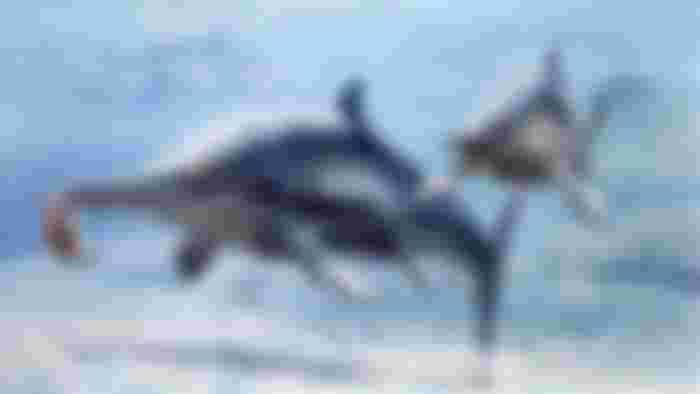Triassic Sea Monster
In Nevada, researchers have discovered a huge fossil marine reptile estimated to have lived 247 million years ago. The researchers noted that the new fossil is a 'beacon of hope' for the resumption of life and evolution.
The discovery of fossils belonging to the early dinosaur age still continues to amaze the scientific world, even though millions of years have passed. A new discovery has revealed that ichthyosaurs (ichthyosaurs), fish-shaped marine reptiles that lived in the early dinosaur age, reached enormous sizes in a period of 2.5 million years, which, evolutionarily speaking, is actually quite short to reach these sizes. for a while.
"We discovered that at a time when the Earth was recovering from a devastating extinction [at the end of the Permian], the size of ichthyosaurs evolved much faster than whales," said senior researcher Lars Schmitz, associate professor of biology at Scripps College. "This is a beautiful beacon of hope and a sign of the resilience of life - if environmental conditions are right, evolution can happen very quickly and life can come back." he added.
"Imagine a sea dragon-like animal"

The new species has been named Cymbospondylus youngorum, as the research team reported online Thursday (December 23) in the journal Science. It is estimated that this large-jawed marine reptile, which has a rather strange appearance like other creatures of its time, lived during the Triassic period 247 million years ago. In addition, the researchers found that with a skull about 6.5 feet long (2 meters), this fully developed C. youngorum was over 55 feet (17 m) tall, or taller than a semi-trailer. "Imagine a sea dragon-like animal: streamlined body, rather long, limbs transformed into fins, and a long tail," Schmitz said of the discovery. It was recorded that at the time the 45-ton creature was alive, it may have lived in the Panthalassic Ocean, a super-ocean off the west coast of North America. Given its size and dentition, it is estimated that C. youngorum likely ate smaller ichthyosaurs, fish, and squid.
It's true that there were many gigantic creatures that lived in the dinosaur age; however, C. youngorum stands out from the rest for several reasons. For example, C. youngorum lived just 5 million years after the "Great Dying," a mass extinction event that occurred at the end of the Permian 252 million years ago and killed about 90 percent of the world's species. The ichthyosaur's gigantic size makes it even more impressive, according to a 2012 study in the journal Nature Geoscience.
New fossil documents rapid evolution of ichthyosaurs

However, there was also an explosion of diversification in marine mollusks known as ammonoids during the first 1 million to 3 million years of the mass extinction, according to a 2012 study. The researchers of the new study think that ichthyosaurs' growth to such gigantic sizes was partly due to the early Triassic ammonite eruption, as well as eating jawless eel-like conodonts that filled the ecological void after the mass extinction. On the other hand, co-author Eva Maria Griebeler, an evolutionary ecologist at Johannes Gutenberg University in Mainz in Germany, said in a statement that whales grew up by eating highly productive primary producers such as plankton, which were not found in dinosaur-age food webs.
According to the researchers, there are also a few similarities between whales and ichthyosaurs, although there are different ways and timelines for achieving gigantism. For example, sperm whales dive to hunt giant squid and there is a link between large size and predatory hunting; There is also a link between large size and tooth loss, just as in toothless whales.
"This new fossil impressively documents the rapid evolution of gigantism in ichthyosaurs," Schmitz said. He noted, however, that the whales followed a different path towards giantness, and that this process was much longer and slower. Paleontologists Lene Delsett and Nicholas Pyenson, who were not involved in the research, said: "Ichthyosaur history tells us that ocean giants are not guaranteed features of marine ecosystems, which is a valuable lesson for all of us in the Anthropocene."


Researchers job are awesome, they can discover creatures that somehow people don't know that they exist.